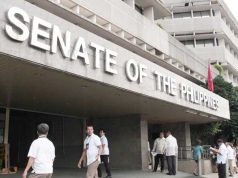Oct. finds fewer Filipinos jobless, though underemployed ranks grow
THE LATEST official labor data showed the ranks of jobless Filipinos decreasing in October, though those wanting more work to augment income increased slightly, the Philippine Statistics Authority (PSA) reported on Thursday.
Preliminary results of the PSA’s October 2019 round of the Labor Force Survey (LFS) put the unemployment rate at 4.5%, down from the 5.1% recorded in the same survey round last year.
This is equivalent to 2.05 million jobless Filipinos, down from 2.203 million in October 2018.
While the underemployment rate — the proportion of those already working, but still looking for more work or longer working hours — improved to 13% from 13.3%, the actual number of the underemployed edged up to 5.615 million from 5.502 million previously.
The latest unemployment and underemployment rates were the lowest among the October rounds of the LFS since the government adopted new definitions for the LFS in 2005.
The size of the labor force was approximately 45.196 million out of the 73.528 million Filipinos aged at least 15 years old, yielding a labor force participation rate (LFPR) of 61.5%. This was higher than last year’s 60.6%.
The employment rate, which is the proportion of the employed to the total labor force — inched up to 95.5% in October from 94.9% the previous year.
In a statement, the National Economic and Development Authority (NEDA) said that the latest employment rate was the highest in all previous October rounds since 2009.
NEDA also noted that employment generation averaged around 1.3 million this year, exceeding the government’s annual target of 900,000-1.1 million.
In a statement, NEDA Officer-in-Charge Adoracion M. Navarro, undersecretary for Regional Development, said that the government remains on track in terms of reducing the unemployment rate to 5.1% in 2019, which is within the target range of 4.7-5.3% set in the Philippine Development Plan 2017-2022.
By economic sector, services made up the biggest share of the employed population. In October, the employment share in that sector grew to 57.7% from 56.8%.
Industry accounted for 18.9% of employed Filipinos in October, down from last year’s 19.1%.
Agriculture employed 23.5% of the workers, down from 24.1%.
“The decrease in the unemployment rate can be ascribed to better economic conditions that resulted in stronger employment creation,” University of Asia and the Pacific economist Cid L. Terosa said in an e-mail, citing “accelerated effort” to implement the government’s infrastructure program as well as the “rush to finish many of the facilities” that are currently being used in the Southeast Asian games in generating jobs and lowering unemployment.
“The drop in the underemployment rate shows that quality jobs have been created in the economy during the period. This augurs well for the economy as it implies better job opportunities that will help realize the productive potential of those in the labor force,” Mr. Terosa added.
In a separate e-mail, Security Bank Corp. Chief Economist Robert Dan J. Roces said that the record-low figures on unemployment and underemployment indicate “an improvement in the labor market.”
“However, the slight increase in the LFPR relative to better employment levels also suggests some workers are probably dropping out of the workforce and joining the informal sector to take up ‘gig economy’ work. However, the report should be welcome news, but there is still a very long way to go,” he added.
YOUTH LABOR DATA MIXED
The employment rate among the youth — defined as those aged 15-24 years old, was 87.2% in October — up from 86.7% in October last year.
The proportion of youth not in employment, education and training improved to 17.1% from 18.7% in October 2018.
On the other hand, the youth LFPR inched down to 37% in October from 37.2% last year.
“Decrease in youth unemployment and underemployment shows young workers getting gainfully employed as better labor market conditions enable better absorption of jobseekers from this age range, perhaps due to more job categories that demand competencies possessed by a younger set of workers,” Security Bank’s Mr. Roces said.
“However, the corresponding decrease in the youth LFPR suggests younger jobseekers are also dropping out from the labor market which could mean some might be going back to school to take up post-graduate degrees, but could also mean a shift to more ‘gig-based’ work which are mostly uncovered by labor laws and leaves young wage earners unprotected by social safety nets.”
NEDA’s Ms. Navarro said the latest LFS results “reflected a vibrant labor market” but that the government must still continue to fast-track the implementation of programs and policies that improve labor productivity and quality of employment. — Jobo E. Hernandez



